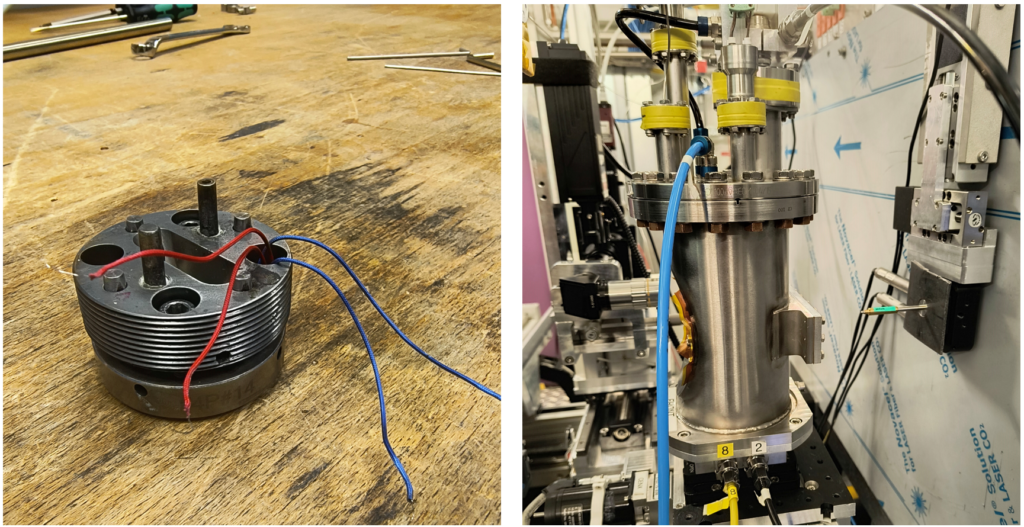Callum is a first year PhD student doing a PhD in experimental condensed matter physics, studying materials at extremely high pressure. In this blog post he gives you a behind the scenes look at his first day working on an experiment at a synchrotron, the most intense and exciting part of being an experimentalist in the field.
In my research I use x-ray crystallography to investigate how the structure of elemental metals change under pressure. While the samples can usually be prepared in the lab in the James Clerk Maxwell Building in Edinburgh, for the x-ray diffraction we need access to a synchrotron – a huge particle accelerator facility that provides the intense x-ray radiation needed.
In September I went on my first trip to a synchrotron, Petra-III at the DESY research centre in Hamburg. Petra-III has a circumference of 2.3 km and 25 beamlines (paths for x-rays which shoot off from the storage ring). The facilities are available to researchers from all over the world who can apply for allotted time to use them. The synchrotron is on 24/7 and when we’re there we make the most of our time – this means long shifts, round the clock.
Here’s how my first day went:
08:30 – breakfast in the DESY hostel. There’s a shared kitchen where everyone has locker space.
09:00 – go to the lab at Petra-III with the others in my group (students and academics) and do some sample prep. We are studying manganese and vanadium at high pressure and high temperature in diamond anvil cells – devices small enough to fit in your hand which can get samples up to pressures as high as the pressure of the centre of the Earth!
11:00 – one of the beamline scientists gives us a demo of the heating setup we’ll be using to heat our samples, as none of us have used it before. The diamond anvil cell gets hooked up to some electrodes for electrical heating and goes inside a vacuum vessel, which will go on the beamline where we’ll shoot x-rays at it.

12:30 – we go for lunch and stock up on snacks at a local shop.
14:00 – there are technical difficulties on the beam so we have to wait while the beamline scientists sort it out. Meanwhile, we work on some more sample prep in the lab.
16:00 – the beam is on! We start a test run to see if the high temperature apparatus is working properly and to get familiar with how it works. Most of it is controlled from the monitors in the control room (photo on the right at the top of the page) – we can just click a button to increase the voltage that raises the temperature.
19:15 – we go for dinner (at a Vietnamese restaurant) and discuss an evening plan of action. We decide that three of us will start collecting data while the other two go to bed until early morning.
21:00 – back in the control room, those of us working the late shift start running the experiment again, gradually increasing the pressure and temperature in our diamond anvil cell and collecting data. Some thematically appropriate music (Under Pressure, Hot To Go) keeps us motivated!
03:30 – the others arrive for the shift changeover. They will finish this run then bring the temperature back down, take the diamond anvil cell off the beam and put a new one on with a different sample.
04:00 – go back to hostel and get some much needed sleep.
11:00 – have a lie in before day 2, which will be slightly shorter!
Photos at top of page: the experimental hall at Petra-III where beamlines are located; a beamline control room.
Find out about more about research at extreme conditions:
Extreme Conditions Physics and the Centre for Science at Extreme Conditions (CSEC)



